Refinishing concrete countertops is an effective way to breathe new life into a surface that may have become dull, stained, or worn over time. The beauty of concrete lies in its versatility and durability, but like any material, it requires proper care and maintenance. When refinishing concrete countertops, I’ve found that the process not only revitalizes the appearance but also strengthens the surface for long-term use. The first step in the process is thoroughly cleaning the countertop. Dirt, grease, or any type of residue can interfere with the refinishing process. I always recommend using a non-abrasive cleaner and ensuring the surface is fully dried before proceeding.
Once cleaned, the next step is repairing any cracks or chips. This is crucial because even minor damage can worsen over time. I typically use a high-quality concrete repair compound to fill in these imperfections. The key is to smooth it out as much as possible to ensure the surface remains level. After allowing the repair to cure, I sand the area lightly to blend it with the surrounding surface. Sanding is an essential part of the refinishing process because it helps remove any old sealants and prepares the surface to absorb new products better.
Sanding can be done with a hand sander or a diamond-grit sanding pad. Depending on how rough the surface is, I choose a grit level that suits the job. I always start with a coarser grit and work my way to finer grits for a smoother finish. This not only helps remove old stains or scratches but also provides a more uniform surface. In some cases, you might have to wet-sand the countertop to avoid generating too much dust, which can become a mess if not properly managed. After sanding, it’s important to thoroughly vacuum the surface and wipe it down to remove all the debris.
Once the surface is clean, I often apply a bonding agent if the surface requires it. Some older concrete countertops might not adhere well to sealers or stains, so a bonding agent helps ensure the refinishing products stick properly. This step is optional but recommended if the countertop is porous or has lost its original integrity. After this, I decide whether I want to stain or reseal the concrete. If staining, this is the stage where I apply the concrete stain. There are a variety of stain options, ranging from acid-based stains to water-based stains, each giving different effects. Acid stains, for instance, react with the minerals in the concrete, creating a marbled look that’s permanent, while water-based stains are easier to apply and come in a wider variety of colors.
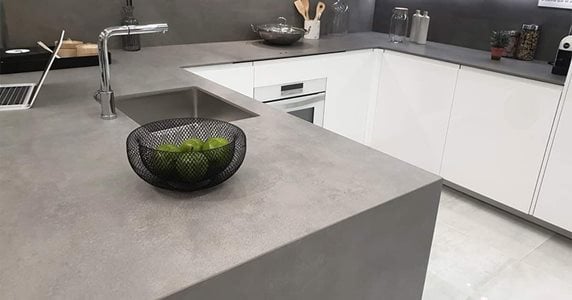
When staining, I always ensure that I apply the product evenly to avoid streaks or blotches. It’s critical to follow the manufacturer’s instructions, including any recommended waiting periods between coats. Once stained, I let the countertop dry for the time suggested, usually 24 hours. Afterward, I assess if it needs an additional coat or if I’m happy with the coverage. If I’m sealing the countertop without staining, this step is much quicker, but it’s still essential to give the sealer ample time to dry between applications.
Once the stain is dry or after cleaning the sanded surface if I’m not staining, I proceed to seal the countertop. Sealing is arguably the most important step when refinishing concrete countertops because it protects the surface from moisture, stains, and wear. I prefer using a high-quality, food-safe sealer, especially in kitchens where the surface will come into contact with food and liquids. Sealers come in different finishes—matte, satin, or glossy—depending on the look you want. I usually apply at least two coats of sealer, allowing each coat to dry completely before applying the next.
It’s important to note that some sealers require buffing after application. Buffing gives the countertop a polished look, but it’s essential to avoid over-buffing, which can weaken the seal. After sealing, I recommend waiting a minimum of 48 hours before using the countertop. This allows the sealer to cure properly, ensuring maximum durability. Regular maintenance, such as cleaning up spills immediately and using non-abrasive cleaners, will help prolong the life of the refinish.
Finally, I sometimes add a layer of wax over the sealed surface for added protection. This is particularly helpful if the countertop will see heavy use. Wax not only enhances the sheen of the sealer but also acts as an additional moisture barrier. It needs to be reapplied periodically, usually every few months, depending on usage. Overall, refinishing concrete countertops can be a time-consuming process, but the result is a refreshed and durable surface that can last for years.

Common Mistakes to Avoid
One of the most common mistakes I see is not properly cleaning the countertop before starting the refinishing process. Any leftover dirt, grease, or particles can affect how well the sealer or stain adheres. It’s essential to take the time to thoroughly clean and dry the surface before moving forward. Another mistake is skipping the sanding process or not sanding evenly. Uneven sanding can lead to an inconsistent finish, with some areas looking smoother than others. I always recommend working systematically across the surface and using the appropriate grit level.
Choosing the wrong type of sealer or stain can also cause issues. Some people opt for cheaper products that might not provide the same level of protection or aesthetic quality as higher-end options. Investing in good materials pays off in the long run. Applying sealer or stain too thickly is another common error. Thick applications can result in bubbles, streaks, or an uneven finish. It’s better to apply several thin coats rather than one thick one. Lastly, rushing the drying process can compromise the refinishing job. Giving each layer ample time to dry and cure ensures a stronger, longer-lasting surface.
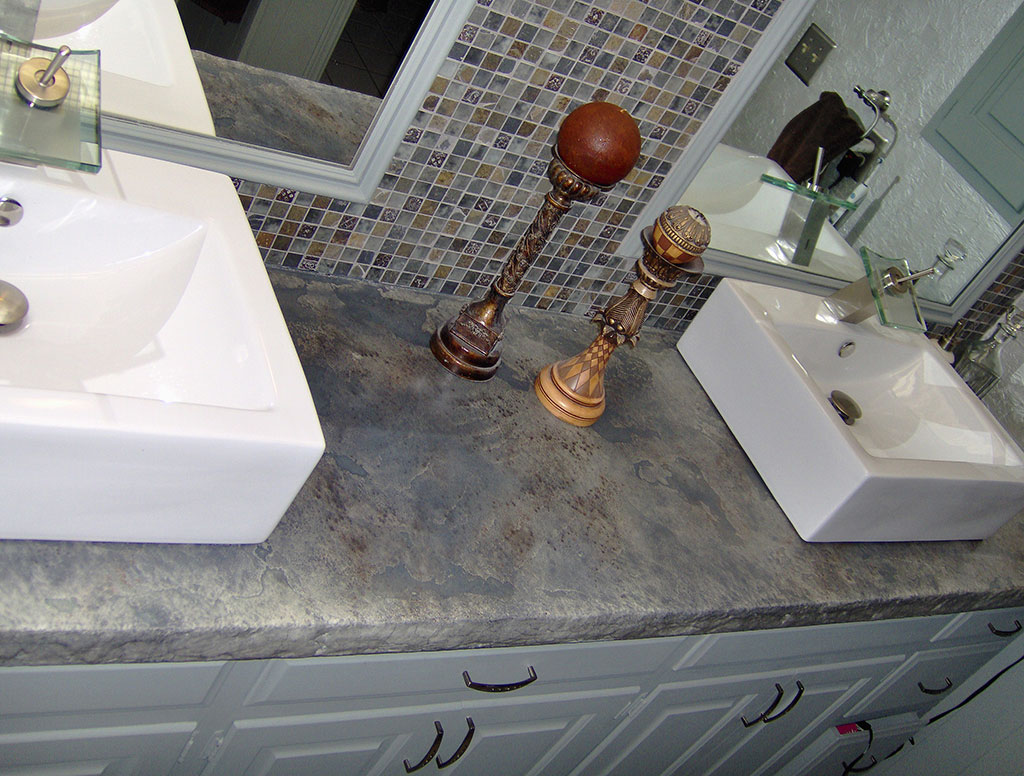
How often should I refinish my concrete countertops?
The frequency of refinishing depends on how often the countertop is used and how well it’s maintained. On average, concrete countertops may need to be refinished every 5-10 years. High-traffic areas, like kitchens, might require more frequent refinishing, especially if they are exposed to spills and stains regularly. Regular cleaning and applying wax can extend the life of your refinished surface.
Can I change the color of my concrete countertop during refinishing?
Yes, changing the color of your concrete countertop is possible by using a stain during the refinishing process. Acid-based and water-based stains offer different looks, with acid stains creating more of a marbled effect. Make sure the countertop is properly prepped and cleaned before applying the stain to ensure it adheres evenly. Once stained, the color is permanent, so it’s important to choose a shade that fits your design preferences.
Do I need to hire a professional to refinish my concrete countertops?
While it’s possible to refinish concrete countertops as a DIY project, it can be time-consuming and requires specific tools like sanders, stains, and sealers. If you’re comfortable with these tools and follow the process carefully, you can likely do it yourself. However, hiring a professional ensures that the job is done efficiently and may offer a higher-quality finish, especially for intricate countertops.
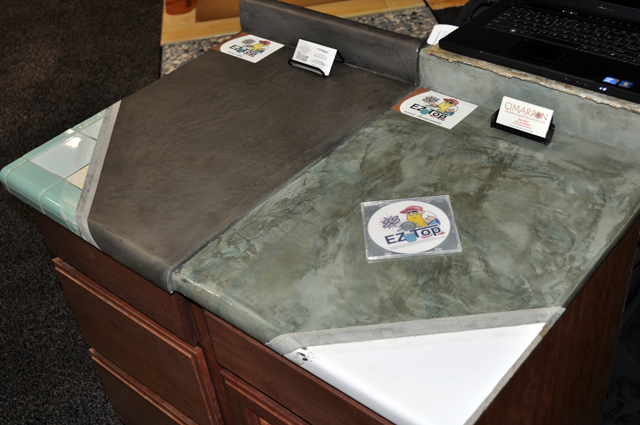
What kind of sealer should I use on my concrete countertops?
The type of sealer you choose depends on the use of the countertop. In kitchens, a food-safe sealer is essential to protect against spills and food preparation. I prefer water-based sealers because they’re easy to apply and clean up, but solvent-based sealers offer a more durable finish in high-traffic areas. Make sure to choose a sealer that fits your needs and the type of finish you desire—matte, satin, or glossy.
Can I use regular household cleaners on refinished concrete countertops?
It’s best to avoid harsh cleaners like bleach or ammonia on refinished concrete countertops, as they can damage the sealer and lead to staining or etching. I recommend using a mild dish soap or a cleaner specifically designed for concrete surfaces. Regular cleaning with a soft cloth or sponge will help maintain the surface, and wiping up spills immediately will protect against stains.
How long do I need to wait before using the countertop after refinishing?
After the refinishing process is complete, it’s crucial to wait at least 48 hours before using the countertop. This allows the sealer to fully cure and ensures it will provide maximum protection. In some cases, especially if you’ve applied multiple coats of stain or sealer, it might be necessary to wait even longer. Following the manufacturer’s recommendations on drying times will help prevent premature wear or damage.
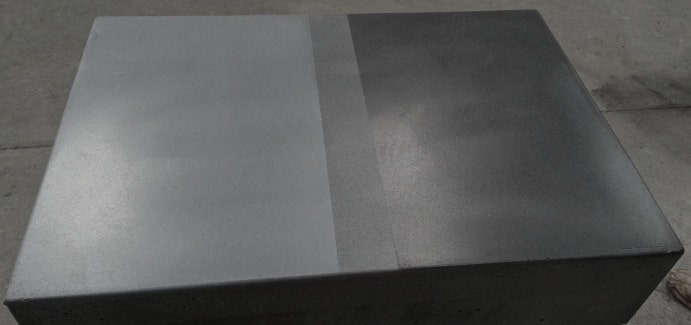
How do I refinish my concrete countertop? Hometalk
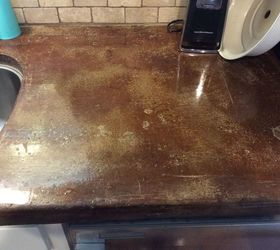
Countertop Refinishing Kit
.jpg)
DIY Concrete Over Laminate Countertops Using Feather Finish

Related articles: